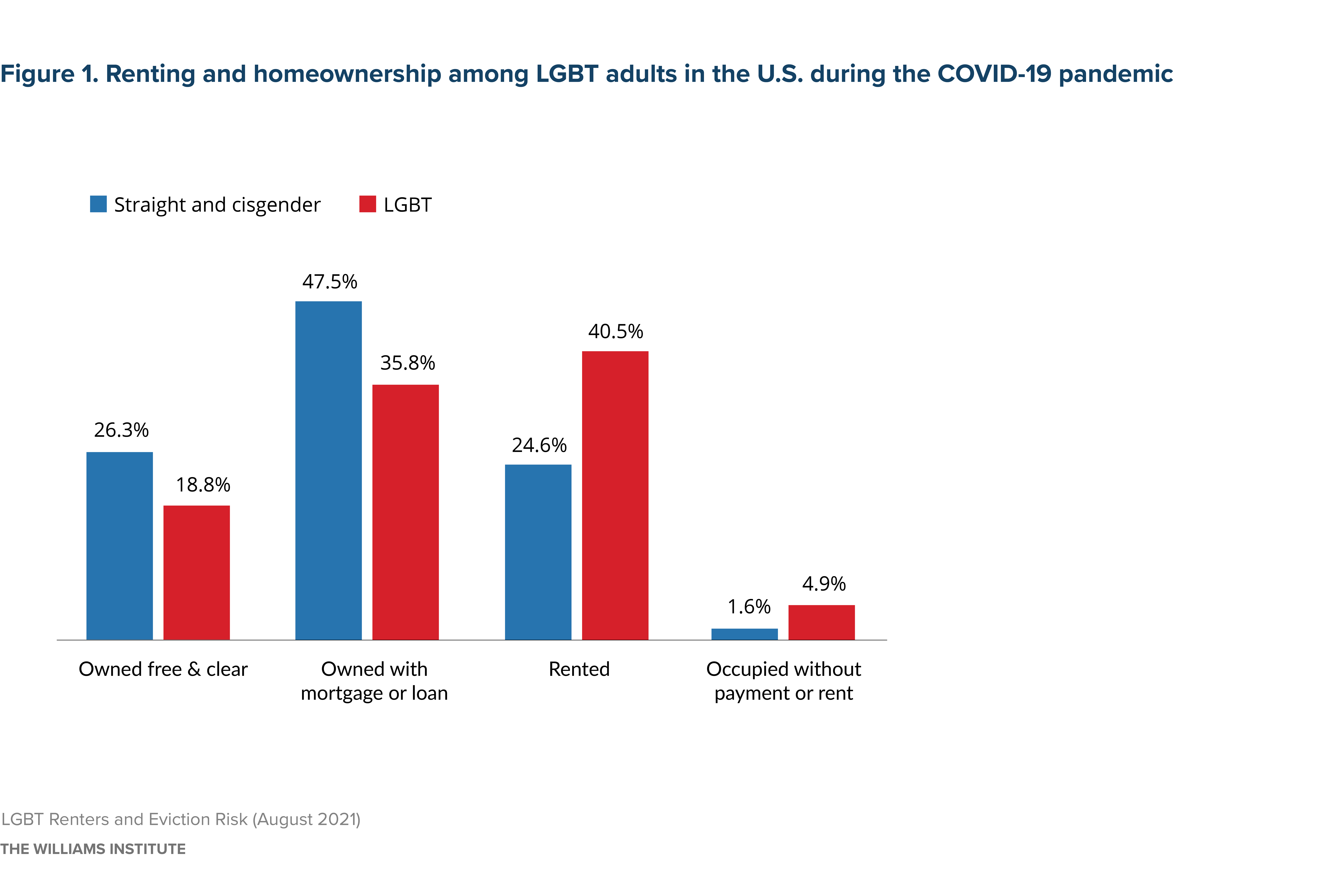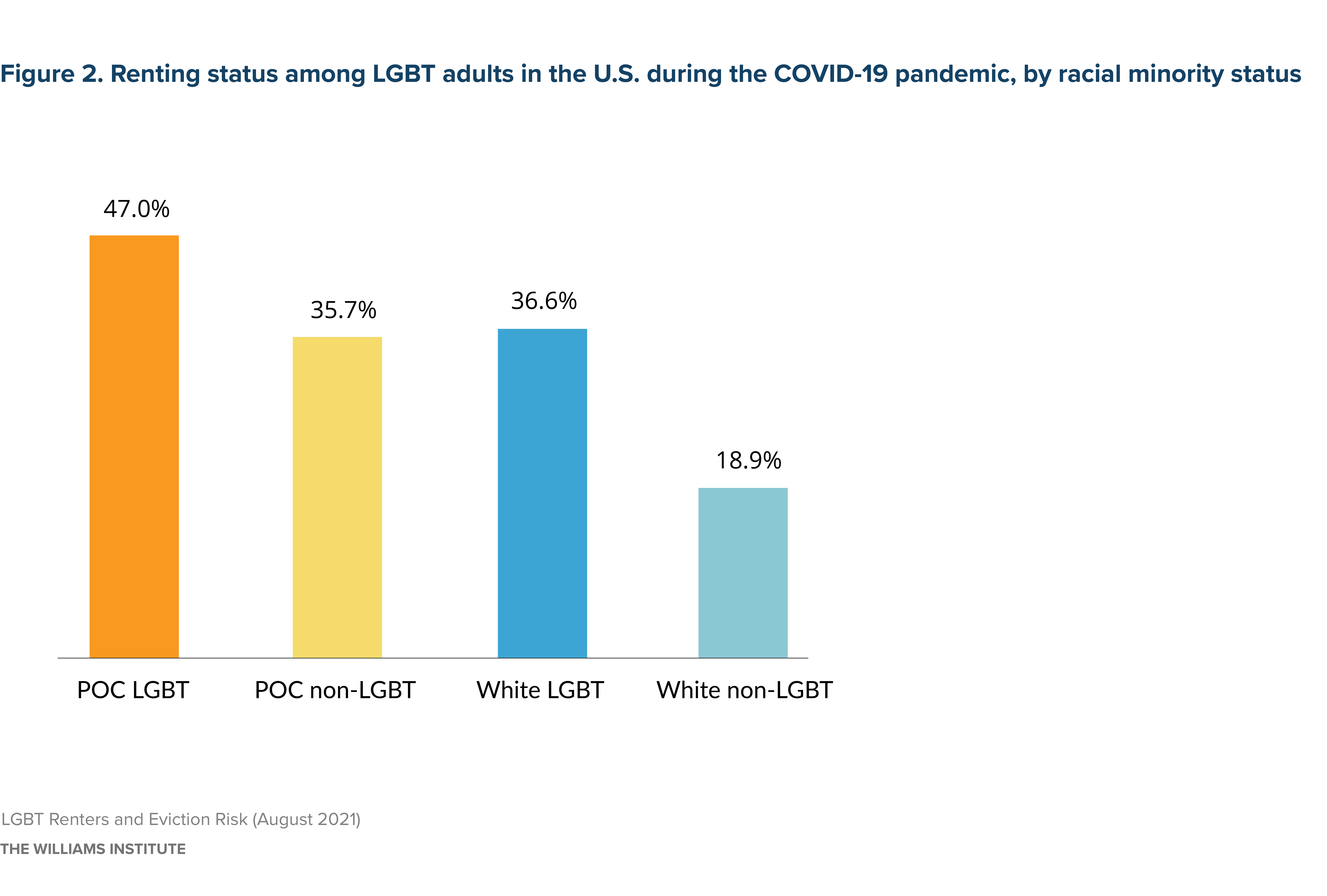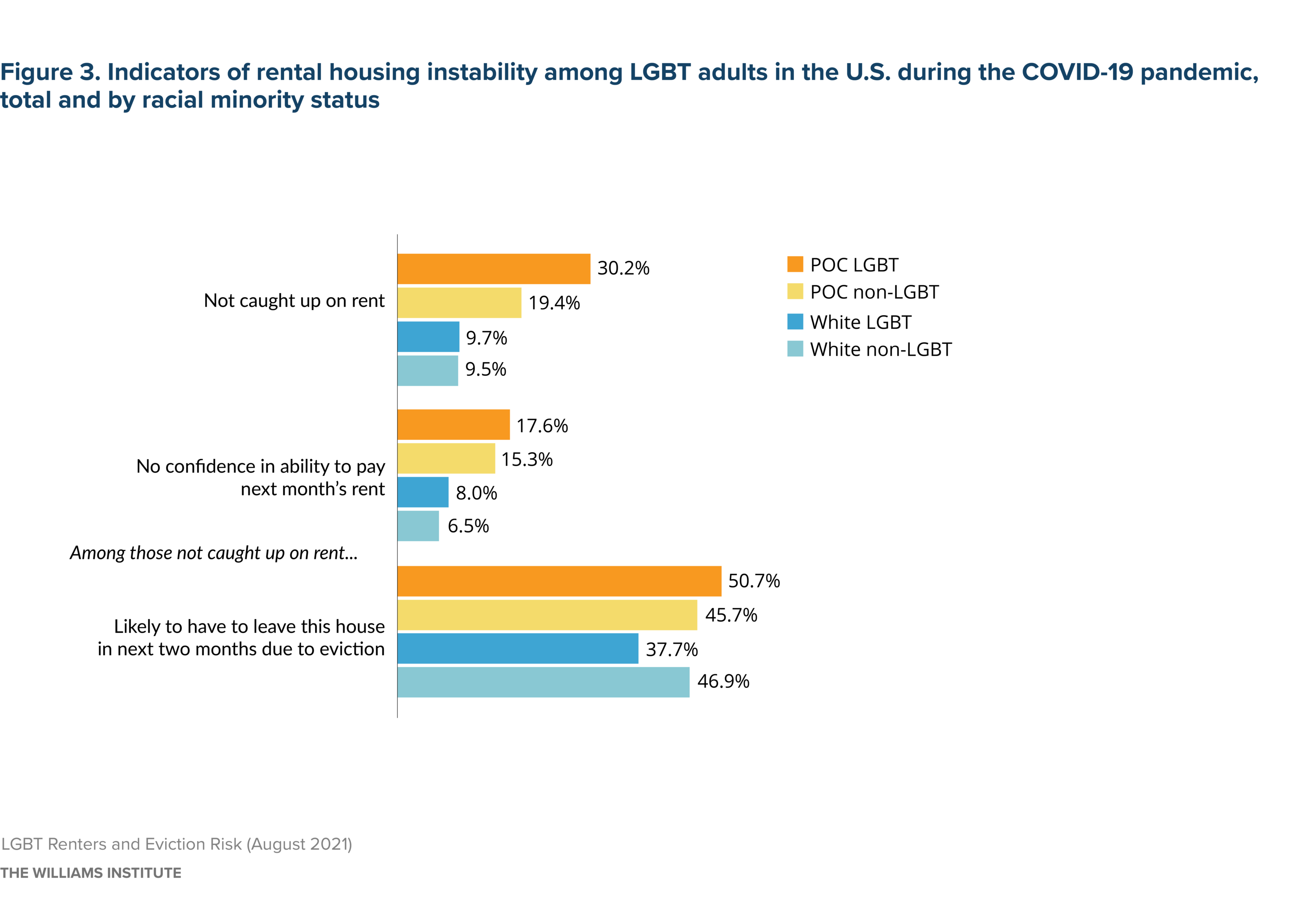Overview
Extensive research has demonstrated that lesbian, gay, bisexual, and transgender (LGBT) people face a number of barriers to stable housing, including affordability in places where they live, higher rates of poverty and lower rates of homeownership. However, little population-based data has been collected on the impact of COVID-19 on housing among LGBT people. The first study to do so was the Williams Institute’s analysis of economic and health outcomes during the Fall 2020 COVID-19 surge. That study found that more LGBT than non-LGBT people reported that their ability to pay rent or mortgage got worse during the pandemic, and these disparities were experienced the most by LGBT people of color. More data are needed, however, to continue tracking the impact of the pandemic across a diverse sexual and gender population over time. The U.S. Census Bureau has been collecting data through its Household Pulse Survey (HPS) since the beginning of the COVID-19 pandemic to measure the pandemic’s social and economic impacts. The most recent phase of Household Pulse Survey data collection, administered from July 21 through August 2 of this year, marked the first time that sexual orientation and gender identity data were collected by the Census Bureau.
Using the HPS data, we examine the proportions of LGBT people experiencing threats to rental housing stability late in the COVID-19 pandemic—issues likely to be of increased relevance in the coming months as federal eviction protections tied to the pandemic are set to expire.
Findings
Economic stability and employment status provide an important context for housing stability, particularly for renters. As the Census Bureau reported, nearly 20% of LGBT people had experienced a loss of income, compared to 17% of non-LGBT people. Further, over a third of LGBT adults reported being in a household that had difficulty paying for usual expenses. One major household expense is rent, and here we report on renting status and three indicators of rental housing stability among LGBT people alongside rates for non-LGBT people, with an examination of differences by race.
More LGBT people report renting their homes during the COVID-19 pandemic compared to non-LGBT people, and LGBT people of color had the highest levels of renting compared to all other groups (Figures 1 & 2). Across these indicators of rental housing stability, LGBT and non-LGBT people are experiencing threats to their housing at statistically similar rates. However, there is evidence that LGBT people are slightly more likely than non-LGBT people to report not being caught up on rent (Table 1, 19% vs 14%). Nearly half of LGBT (47%) and non-LGBT (46%) renters who are not caught up on rent fear they may be evicted within the next two months. However, more LGBT people of color reported being behind on their rent compared to all other groups and had similarly high reports to non- LGBT people of color of fearing they could not make the next month’s rent and likely eviction.


